Baked chicken cutlets are a delightful and healthy meal choice, offering a crispy exterior with tender and juicy meat. This dish is perfect for busy weeknights or a family gathering, balancing flavor and nutrition. In this article, we’ll dive into everything you need to know about baked chicken cutlet recipes, from the basics to advanced variations and tips.
What Are Baked Chicken Cutlet Recipes?
Baked chicken cutlets are thinly sliced or pounded chicken pieces coated in a seasoned crumb mixture and baked to perfection. Unlike their fried counterparts, these cutlets rely on the oven for crispiness, making them a healthier alternative. They’re versatile and pair well with various side dishes and sauces.
Difference Between Fried and Baked Cutlets
Fried Cutlets:
- Prepared by frying chicken in oil, resulting in a rich, crispy texture.
- Higher in fat and calories.
- Requires careful monitoring to avoid overcooking.
Baked Cutlets:
- Cooked in the oven with minimal oil.
- Retain crispiness without added fat.
- Easier to prepare and clean up.
The choice between fried and baked comes down to personal preference, but baked cutlets are a guilt-free indulgence that doesn’t compromise on flavor. For other recipes, click here
Benefits of Baking Over Frying
- Healthier Option: Lower fat and calorie content.
- Less Mess: No splattering oil or greasy pans.
- Even Cooking: The oven ensures consistent results.
- Convenience: Requires less attention compared to frying.
Key Ingredients for Baked Chicken Cutlets
Choosing the Right Chicken Cuts
Boneless, skinless chicken breasts or thighs are ideal for cutlets. Breasts are leaner, while thighs offer a juicier option. Ensure the pieces are uniformly thin for even baking.
Essential Seasonings and Herbs
Enhance flavor with spices like garlic powder, paprika, onion powder, salt, and pepper. Fresh herbs such as parsley, thyme, or basil add a fragrant touch.
Recommended Bread Crumbs and Coatings
- Panko Bread Crumbs: Provide a light, crispy coating.
- Seasoned Bread Crumbs: Add an extra layer of flavor.
- Gluten-Free Options: Use almond flour or crushed rice crackers for dietary needs.
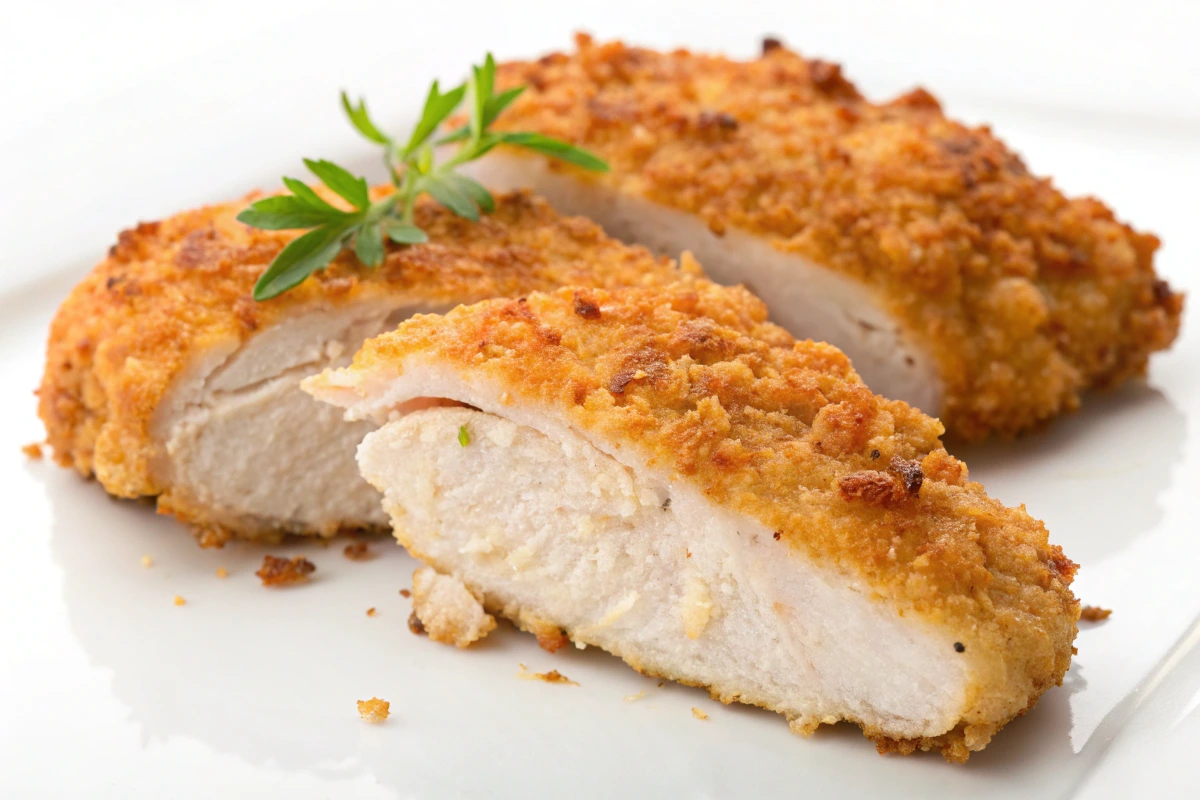
Step-by-Step Guide to Crafting the Best Baked Chicken Cutlet Recipes
Prepping the Chicken: Trimming and Flattening
- Trim excess fat from chicken pieces.
- Place chicken between two sheets of plastic wrap and pound to an even thickness of about ½ inch.
Seasoning the Chicken Cutlets
- Generously season both sides of the chicken with your spice mix.
- Marinate for 30 minutes for deeper flavor, if time permits.
Coating the Chicken: Techniques and Tips
- Dredge each piece in all-purpose flour.
- Dip in beaten eggs or a buttermilk substitute.
- Coat with bread crumbs, pressing gently to ensure even coverage.
Baking the Cutlets: Time and Temperature
- Preheat oven to 400°F (200°C).
- Place coated chicken on a greased baking sheet or wire rack.
- Bake for 20–25 minutes, flipping halfway through, until golden and cooked through.
Variations of Baked Chicken Cutlet Recipes
Gluten-Free Options
Replace bread crumbs with gluten-free alternatives like almond meal or crushed gluten-free crackers.
Low-Carb and Keto-Friendly Recipes
Use pork rind crumbs or Parmesan cheese for a crispy, carb-free coating.
International Flavors
- Italian: Add Parmesan to the breading and serve with marinara sauce.
- Indian: Marinate with yogurt and spices like turmeric and cumin.
- Asian: Incorporate soy sauce, ginger, and sesame seeds.
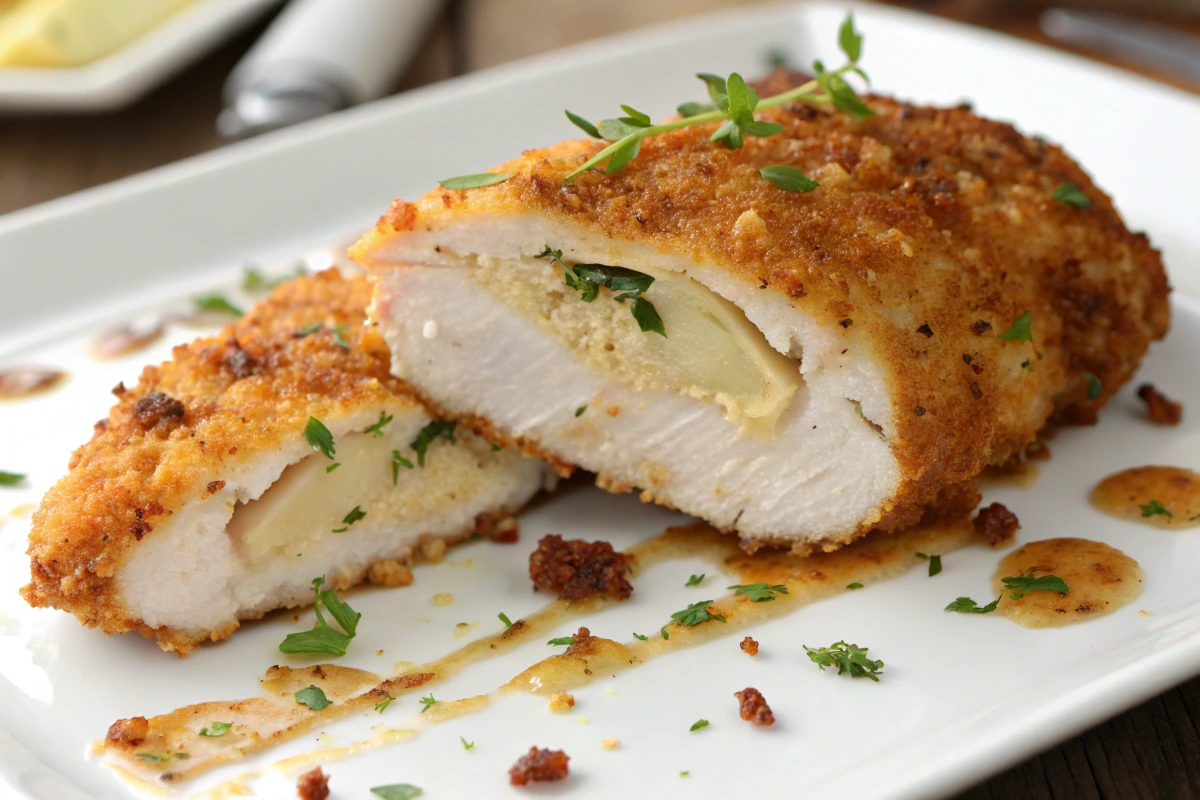
Pairing Suggestions for Baked Chicken Cutlets
Side Dishes
- Steamed or roasted vegetables.
- Mashed or roasted potatoes.
- Rice pilaf or quinoa salad.
- other choices.
Sauces and Dips
- Classic marinara or tomato sauce.
- Creamy garlic aioli or honey mustard.
- Spicy buffalo or barbecue sauce.
Common Mistakes and How to Avoid Them
- Skipping Preheating: Always preheat the oven for even cooking.
- Overcrowding the Pan: Leave space between cutlets to ensure crispiness.
- Under-Seasoning: Be generous with spices for maximum flavor.
- Using Uneven Pieces: Flatten chicken to the same thickness for consistent results.
Storing and Reheating Baked Chicken Cutlets
- Storage: Place cooled cutlets in an airtight container. Refrigerate for up to 3 days or freeze for up to 3 months.
- Reheating: Reheat in the oven at 375°F (190°C) for 10–15 minutes to maintain crispiness.
Health Benefits of Baked Chicken Cutlets
- Rich in Protein: Supports muscle repair and growth.
- Low in Fat: A heart-healthy choice compared to fried options.
- Nutrient-Dense: Packed with essential vitamins and minerals.
FAQs About Baked Chicken Cutlet Recipes
Is it Better to Bake Chicken at 350 or 400?
When it comes to preparing baked chicken cutlet recipes, choosing the right oven temperature is crucial for achieving the perfect balance of tenderness and crispiness. Baking chicken at 350°F results in a slower cooking process, which can be ideal for thicker cuts of chicken or recipes requiring longer baking times. This method ensures the chicken cooks evenly without drying out, making it a safe option for beginner cooks. On the other hand, baking at 400°F provides a quicker cooking process and promotes a crispy, golden-brown exterior, which is particularly desirable for breaded chicken cutlets. This higher temperature locks in moisture while creating a satisfying crust, especially when paired with a coating of panko breadcrumbs or Parmesan cheese.
Ultimately, the choice between 350°F and 400°F depends on your specific baked chicken cutlet recipes and personal preferences. If your cutlets are thin and you’re aiming for a crispy coating, 400°F is the better option. Conversely, for thicker chicken pieces or when you want to bake chicken with vegetables in the same dish, 350°F may be more appropriate to ensure even cooking. A useful tip is to use a meat thermometer to check the internal temperature of your chicken; it should reach 165°F for safe consumption. By understanding the impact of oven temperature, you can elevate your baked chicken cutlet recipes to a new level of flavor and texture.
How Long Are Cooked Chicken Cutlets?
In baked chicken cutlet recipes, the cooking time for chicken cutlets depends on their thickness and the baking temperature. For standard cutlets, which are typically pounded to an even thickness of about ½ inch, the cooking time at 400°F is approximately 20 to 25 minutes. If you’re baking at 350°F, it may take closer to 25 to 30 minutes. It’s important to flip the cutlets halfway through cooking to ensure even browning on both sides.
The cooking time can vary if you’re using thicker or thinner cutlets. Thicker pieces will require additional time, while thinner ones might cook in as little as 15 minutes at 400°F. To ensure your baked chicken cutlet recipes are cooked perfectly, using a meat thermometer is the most reliable method. The internal temperature should reach 165°F at the thickest part of the chicken, confirming that it’s safe to eat.
Keeping track of time and temperature is essential for a successful outcome. Overcooking can result in dry and less flavorful cutlets, while undercooking can pose health risks. By following recommended cooking times and closely monitoring the chicken’s progress, you’ll consistently achieve tender and juicy cutlets that are a highlight of any meal.
Should I Cover My Chicken When I Bake It in the Oven?
Whether or not to cover your chicken when baking in the oven largely depends on the type of baked chicken cutlet recipes you’re making. Covering the chicken traps steam, which helps retain moisture and can be particularly useful for thicker cuts or recipes involving sauces. However, if you’re making breaded chicken cutlets, it’s generally better to bake them uncovered. This ensures that the coating remains crispy and develops a golden-brown crust.
In some cases, you might opt to partially cover the chicken during the first half of baking, especially if you’re concerned about it drying out. Once the cutlets are almost fully cooked, removing the cover allows the surface to crisp up nicely. If you decide to cover your chicken, use aluminum foil and tent it loosely to avoid sticking or smothering the coating.
The choice ultimately depends on the desired texture of your chicken. For baked chicken cutlet recipes, uncovering the cutlets during baking is often the best way to achieve a crispy exterior while keeping the meat juicy. By adjusting your approach based on the recipe, you can tailor the baking process to meet your expectations for flavor and texture.
How Long for Thin Chicken Breast in the Oven?
Thin chicken breasts, like those used in baked chicken cutlet recipes, cook faster than their thicker counterparts. When baking thin breasts in the oven at 400°F, they typically take 15 to 20 minutes to reach perfection. If baking at a lower temperature of 350°F, the cooking time may extend to around 20 to 25 minutes. Always use a meat thermometer to ensure the internal temperature reaches 165°F, which indicates the chicken is fully cooked and safe to eat.
One advantage of thin chicken breasts is their ability to cook evenly, reducing the risk of dry spots. However, because they cook quickly, it’s essential to monitor them closely. Overcooking even by a few minutes can lead to dryness. To enhance their flavor and moisture, consider marinating the chicken beforehand or coating it in seasoned breadcrumbs as part of your baked chicken cutlet recipes.
Thin chicken breasts are a convenient option for busy weeknights or when you’re preparing a lighter meal. Their quick cooking time makes them a versatile choice, allowing you to experiment with different seasonings, coatings, and side dishes.
Is 30 Minutes Enough to Bake Chicken?
In many cases, 30 minutes is sufficient to bake chicken, depending on its thickness and the oven temperature. For thin cutlets featured in baked chicken cutlet recipes, 30 minutes at 400°F would likely overcook the chicken, resulting in dryness. However, for thicker chicken breasts or cuts, 30 minutes at 350°F can be an appropriate cooking time.
To ensure your chicken is cooked perfectly within this time frame, it’s vital to monitor its internal temperature using a meat thermometer. The target temperature for chicken is 165°F. If you’re working with thinner cutlets, they may be fully cooked in as little as 20 to 25 minutes, making 30 minutes unnecessary.
The key is to tailor your cooking time to the chicken’s size and thickness. If you’re uncertain, it’s better to start with a shorter cooking time and add a few extra minutes as needed. This approach ensures that your baked chicken cutlet recipes remain moist and flavorful without risking overcooking.
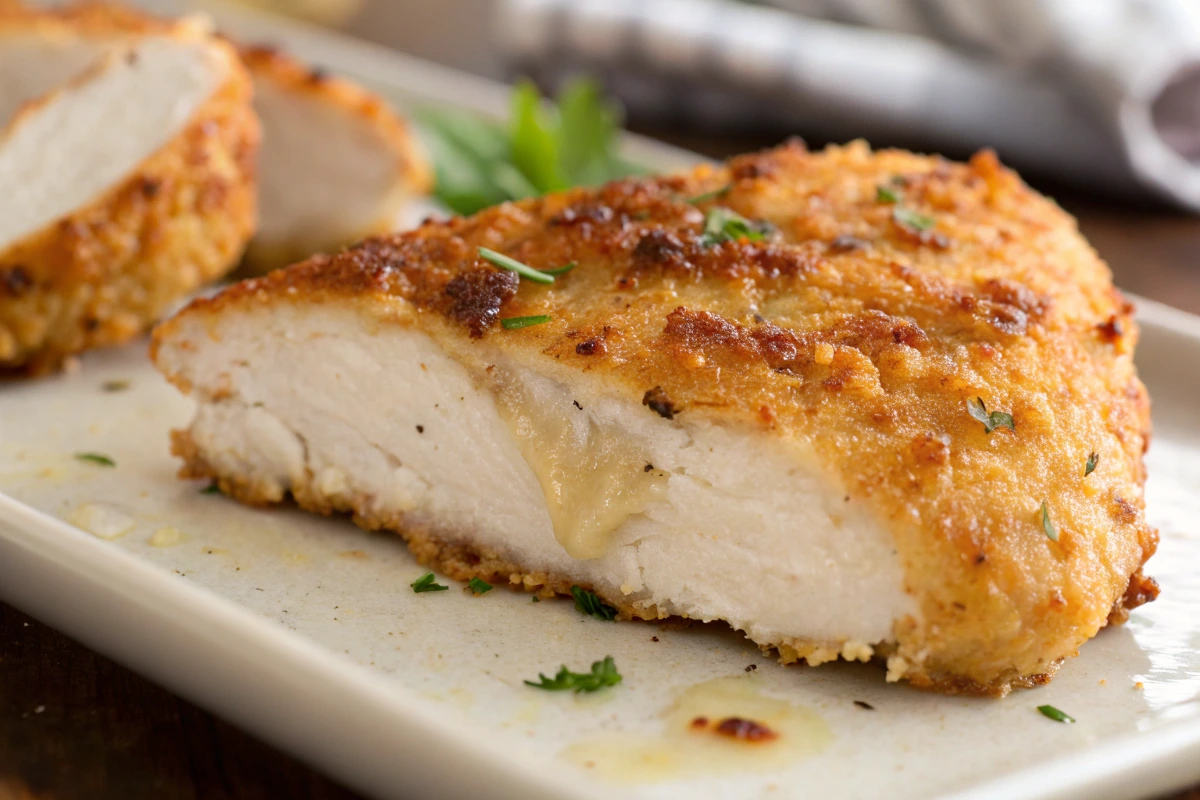
How Do You Keep Chicken Cutlets from Drying Out?
Preventing dryness in chicken cutlets is essential for any successful baked chicken cutlet recipes. One of the best ways to achieve juicy and tender cutlets is by marinating the chicken beforehand. A simple marinade of olive oil, lemon juice, and your favorite herbs not only infuses flavor but also keeps the chicken moist during baking.
Another crucial step is ensuring the cutlets are of uniform thickness. Pounding the chicken evenly allows it to cook consistently, reducing the risk of overcooked edges. Additionally, using a coating such as breadcrumbs or a Parmesan crust provides a protective barrier, locking in moisture while the chicken bakes.
Baking at a higher temperature, like 400°F, for a shorter time also helps preserve juiciness. Lower temperatures with longer baking times can dry out the chicken. Lastly, always allow the chicken to rest for a few minutes after baking. This allows the juices to redistribute, ensuring a tender bite every time.
Should I Use Aluminum Foil When Baking Chicken?
Aluminum foil can be a helpful tool when preparing baked chicken cutlet recipes, depending on your desired outcome. Covering chicken with foil traps heat and moisture, making it particularly useful for retaining juiciness in thicker cuts or recipes with sauces. However, when baking breaded chicken cutlets, it’s generally better to avoid foil to maintain a crisp coating.
If you’re concerned about cleaning up afterward, you can line your baking sheet with foil and place the chicken on a wire rack. This setup allows for even heat circulation while preventing the chicken from sitting in its juices, which can make the coating soggy. Foil is also beneficial for tenting the chicken, protecting it from over-browning in high-heat settings.
Ultimately, the decision to use foil depends on the recipe and your personal preferences. For crispy baked chicken cutlet recipes, leaving the chicken uncovered usually yields the best results.
How to Keep Chicken Moist While Baking?
Maintaining moisture in chicken is key to preparing delicious baked chicken cutlet recipes. Marinating the chicken is one of the most effective methods, as the marinade penetrates the meat, enhancing both flavor and juiciness. Ingredients like yogurt, buttermilk, or olive oil are excellent bases for marinades that tenderize and hydrate the chicken.
Coating the chicken also helps to lock in moisture. A breadcrumb or cheese coating acts as a barrier, preventing the chicken from drying out in the oven. Additionally, baking the chicken at a higher temperature, such as 400°F, ensures it cooks quickly without losing its natural juices.
Another important tip is not to overcook the chicken. Use a meat thermometer to check for an internal temperature of 165°F and remove the chicken from the oven promptly. Letting it rest for a few minutes before serving allows the juices to redistribute, keeping the chicken moist and flavorful.
Do You Put Water in the Pan When Baking Chicken?
Adding water to the pan when baking chicken is a technique sometimes used in recipes that require extra moisture, but it’s not necessary for baked chicken cutlet recipes. The breading and coating on cutlets are designed to create a crisp texture, and adding water to the pan can make the coating soggy.
If you’re baking chicken without breading or are preparing a dish with vegetables, a small amount of water or broth can help keep the chicken juicy and create a natural sauce. However, for breaded chicken cutlets, it’s better to rely on proper marinating, seasoning, and baking techniques to retain moisture. By following these methods, you’ll achieve perfectly baked chicken without the need for added water.
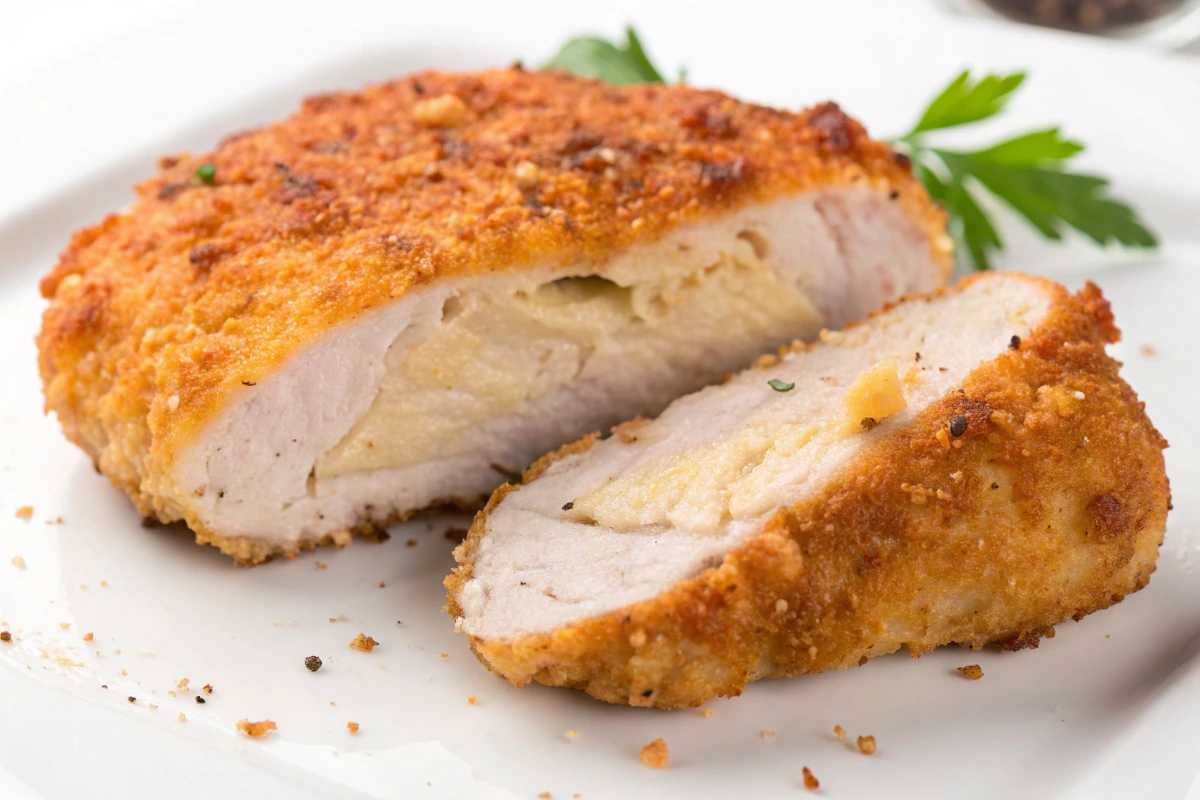
Conclusion
Baked chicken cutlets are more than just a recipe—they’re a culinary canvas that lets you explore endless flavor possibilities while staying healthy and hassle-free. Whether you’re planning a quick weekday dinner or preparing a dish to impress at a family gathering, these versatile cutlets are the perfect solution. Packed with flavor, crispiness, and a tender center, baked chicken cutlet recipes are a winning choice for cooks of all skill levels.
The beauty of baked chicken cutlets lies in their adaptability. You can go classic with a simple breadcrumb crust, get adventurous with international flavors, or cater to dietary needs with gluten-free or keto-friendly options. Pair them with vibrant salads, hearty vegetables, or your favorite dips and sauces to create a meal that feels new every time.
What’s more, their health benefits make them a guilt-free indulgence. Baking rather than frying keeps them lower in fat and calories without compromising on taste. Plus, with easy preparation and minimal cleanup, they’re as practical as they are delicious.
Whether you’re a beginner experimenting in the kitchen or a seasoned chef looking for a reliable go-to dish, baked chicken cutlets are guaranteed to become a staple in your meal rotation. So why wait? Grab your favorite seasonings, fire up the oven, and experience the joy of this irresistible dish. Elevate your dining experience with baked chicken cutlet recipes today—you’ll wonder how you ever cooked without them!
Table of Contents
For additional recipe inspiration, visit us on Facebook!

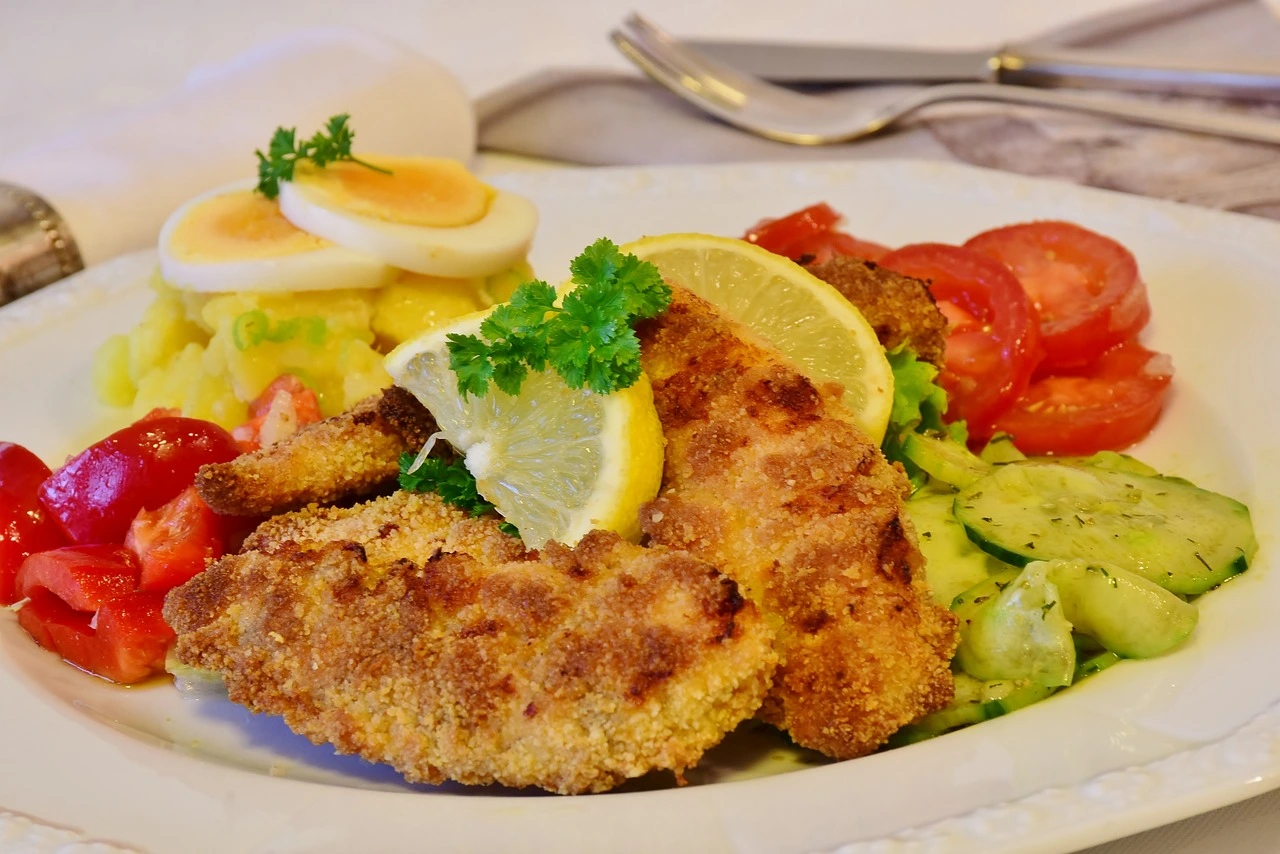
14 thoughts on “Delicious and Easy Baked Chicken Cutlet Recipes”